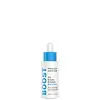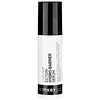What's inside
What's inside
 Key Ingredients
Key Ingredients

 Benefits
Benefits

 Concerns
Concerns

 Ingredients Side-by-side
Ingredients Side-by-side

Water
Skin ConditioningEctoin
Skin ConditioningIsopentyldiol
HumectantTriethylhexanoin
MaskingDiisopropyl Adipate
EmollientIsoamyl Laurate
EmollientDicaprylyl Carbonate
EmollientUndecane
EmollientPolyglyceryl-4 Oleate
EmulsifyingSqualane
EmollientTridecane
PerfumingPolyglyceryl-6 Oleate
EmulsifyingPolyhydroxystearic Acid
Emulsifying1,2-Hexanediol
Skin ConditioningSimmondsia Chinensis Seed Oil
EmollientSodium Hyaluronate
HumectantCaprylic/Capric Triglyceride
MaskingTocopherol
AntioxidantHydroxyacetophenone
AntioxidantGlycogen
HumectantCoco-Caprylate/Caprate
EmollientHydrogenated Olive Oil Unsaponifiables
EmollientSodium Phytate
Citric Acid
BufferingStearalkonium Hectorite
Gel FormingPolyglyceryl-3 Diisostearate
EmulsifyingPolyglyceryl-3 Polyricinoleate
EmulsifyingWater, Ectoin, Isopentyldiol, Triethylhexanoin, Diisopropyl Adipate, Isoamyl Laurate, Dicaprylyl Carbonate, Undecane, Polyglyceryl-4 Oleate, Squalane, Tridecane, Polyglyceryl-6 Oleate, Polyhydroxystearic Acid, 1,2-Hexanediol, Simmondsia Chinensis Seed Oil, Sodium Hyaluronate, Caprylic/Capric Triglyceride, Tocopherol, Hydroxyacetophenone, Glycogen, Coco-Caprylate/Caprate, Hydrogenated Olive Oil Unsaponifiables, Sodium Phytate, Citric Acid, Stearalkonium Hectorite, Polyglyceryl-3 Diisostearate, Polyglyceryl-3 Polyricinoleate
Water
Skin ConditioningPropanediol
SolventCaprylic/Capric Triglyceride
MaskingCoconut Alkanes
EmollientEctoin 2%
Skin ConditioningHydrolyzed Sodium Hyaluronate
Skin ConditioningSodium Hyaluronate
HumectantMaltodextrin
AbsorbentPhenoxyethanol
PreservativeSodium Stearoyl Glutamate
CleansingPanthenol
Skin ConditioningCetearyl Alcohol
EmollientSclerotium Gum
Emulsion StabilisingXanthan Gum
EmulsifyingGlyceryl Stearate
EmollientJojoba Esters
EmollientCoco-Caprylate/Caprate
EmollientEthylhexylglycerin
Skin ConditioningSodium Citrate
BufferingHelianthus Annuus Seed Wax
Skin ConditioningCitric Acid
BufferingPolyglyceryl-10 Stearate
Skin ConditioningAvena Sativa Kernel Extract
AbrasiveGlycerin
HumectantLeuconostoc/Radish Root Ferment Filtrate
AntimicrobialTriethyl Citrate
MaskingPentylene Glycol
Skin ConditioningPolyglyceryl-6 Behenate
Emulsion StabilisingSodium Hyaluronate Crosspolymer
HumectantCeramide NP
Skin ConditioningHyaluronic Acid
HumectantCeramide AP
Skin ConditioningCholesterol
EmollientPhytosphingosine
Skin ConditioningBehenic Acid
CleansingSodium Levulinate
Skin ConditioningPolyglycerin-3
HumectantPotassium Sorbate
PreservativeSodium Cetearyl Sulfate
CleansingCeramide EOP
Skin ConditioningWater, Propanediol, Caprylic/Capric Triglyceride, Coconut Alkanes, Ectoin 2%, Hydrolyzed Sodium Hyaluronate, Sodium Hyaluronate, Maltodextrin, Phenoxyethanol, Sodium Stearoyl Glutamate, Panthenol, Cetearyl Alcohol, Sclerotium Gum, Xanthan Gum, Glyceryl Stearate, Jojoba Esters, Coco-Caprylate/Caprate, Ethylhexylglycerin, Sodium Citrate, Helianthus Annuus Seed Wax, Citric Acid, Polyglyceryl-10 Stearate, Avena Sativa Kernel Extract, Glycerin, Leuconostoc/Radish Root Ferment Filtrate, Triethyl Citrate, Pentylene Glycol, Polyglyceryl-6 Behenate, Sodium Hyaluronate Crosspolymer, Ceramide NP, Hyaluronic Acid, Ceramide AP, Cholesterol, Phytosphingosine, Behenic Acid, Sodium Levulinate, Polyglycerin-3, Potassium Sorbate, Sodium Cetearyl Sulfate, Ceramide EOP
 Reviews
Reviews

Ingredients Explained
These ingredients are found in both products.
Ingredients higher up in an ingredient list are typically present in a larger amount.
This ingredient is an emollient, solvent, and texture enhancer. It is considered a skin-softener by helping the skin prevent moisture loss.
It helps thicken a product's formula and makes it easier to spread by dissolving clumping compounds.
Caprylic Triglyceride is made by combining glycerin with coconut oil, forming a clear liquid.
While there is an assumption Caprylic Triglyceride can clog pores due to it being derived from coconut oil, there is no research supporting this.
Learn more about Caprylic/Capric TriglycerideCitric Acid is an alpha hydroxy acid (AHA) naturally found in citrus fruits like oranges, lemons, and limes.
Like other AHAs, citric acid can exfoliate skin by breaking down the bonds that hold dead skin cells together. This helps reveal smoother and brighter skin underneath.
However, this exfoliating effect only happens at high concentrations (20%) which can be hard to find in cosmetic products.
Due to this, citric acid is usually included in small amounts as a pH adjuster. This helps keep products slightly more acidic and compatible with skin's natural pH.
In skincare formulas, citric acid can:
While it can provide some skin benefits, research shows lactic acid and glycolic acid are generally more effective and less irritating exfoliants.
Most citric acid used in skincare today is made by fermenting sugars (usually from molasses). This synthetic version is identical to the natural citrus form but easier to stabilize and use in formulations.
Read more about some other popular AHA's here:
Learn more about Citric AcidCoco-Caprylate/Caprate is created from fatty coconut alcohol, caprylic acid, and capric acid.
It is a lightweight emollient. Emollients create a thin barrier on the skin to trap moisture in. This helps keep your skin hydrated and soft.
Once applied, Coco-Caprylate/Caprate is absorbed quickly and leaves a silky feel.
Coco-Caprylate/Caprate may not be fungal acne safe.
Learn more about Coco-Caprylate/CaprateEctoin is a compound found naturally in some species of bacteria. It can be synthetically created for skincare use.
This ingredient is an osmolyte; Osmolytes help organisms survive osmotic shock (it protects them from extreme conditions). It does this by influencing the properties of biological fluids within cells.
When applied to the skin, ectoin helps bind water molecules to protect our skin. The water forms a sort of armor for the parts of our skin cells, enzymes, proteins, and more.
Besides this, ectoin has many uses in skincare:
A study from 2004 found ectoin to counteract the damage from UV-A exposure at different cell levels. It has also been shown to protect skin against both UV-A, UV-B rays, infrared light, and visible light.
Studies show ectoin to have dual-action pollution protection: first, it protects our skin from further pollution damage. Second, it helps repair damage from pollution.
In fact, ectoin has been shown to help with:
Fun fact: In the EU, ectoin is used in inhalation medication as an anti-pollution ingredient.
Ectoin is a highly stable ingredient. It has a wide pH range of 1-9. Light, oxygen, and temperature do not affect this ingredient.
Learn more about EctoinSodium Hyaluronate is hyaluronic acid's salt form. It is commonly derived from the sodium salt of hyaluronic acid.
Like hyaluronic acid, it is great at holding water and acts as a humectant. This makes it a great skin hydrating ingredient.
Sodium Hyaluronate is naturally occurring in our bodies and is mostly found in eye fluid and joints.
These are some other common types of Hyaluronic Acid:
Learn more about Sodium HyaluronateWater. It's the most common cosmetic ingredient of all. You'll usually see it at the top of ingredient lists, meaning that it makes up the largest part of the product.
So why is it so popular? Water most often acts as a solvent - this means that it helps dissolve other ingredients into the formulation.
You'll also recognize water as that liquid we all need to stay alive. If you see this, drink a glass of water. Stay hydrated!
Learn more about Water